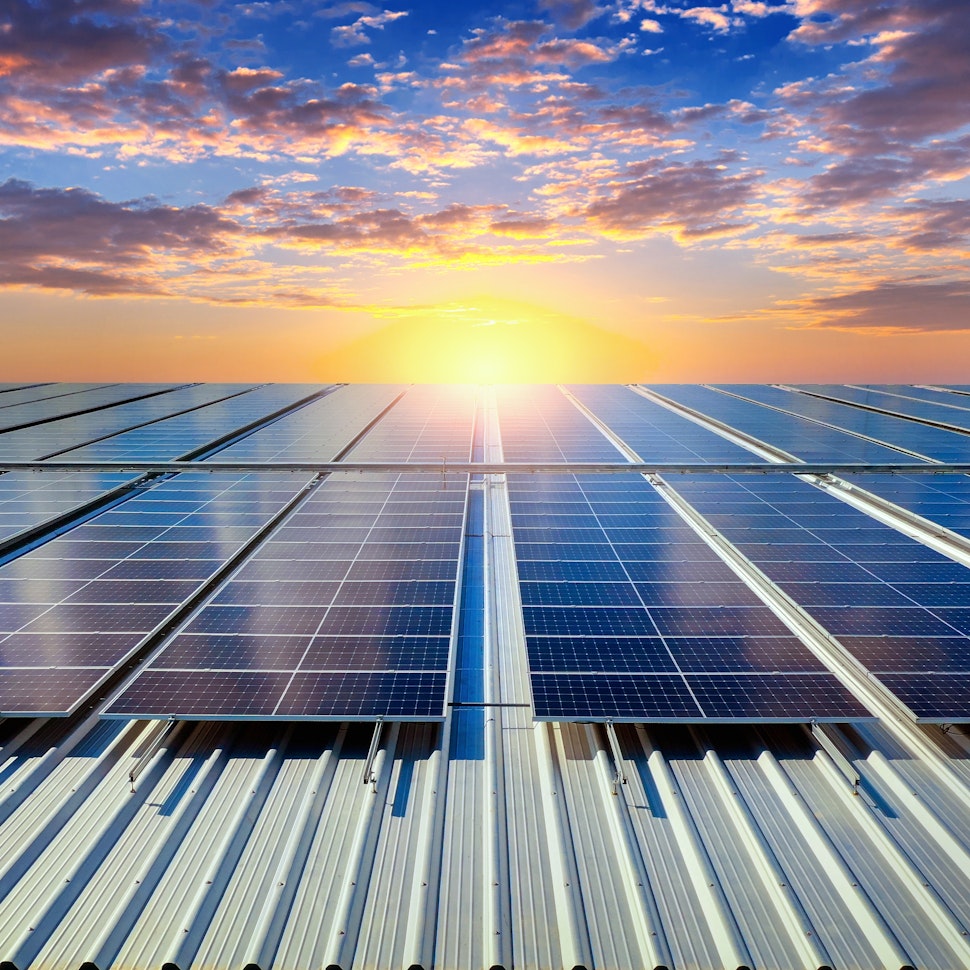- Solar energy blog
- A guide through semi-transparent solar cells
A guide through semi-transparent solar cells
Maïlys Babin

Content
How transparent solar cells work
Transparent cells work by capturing light from the invisible UV spectrum while allowing light from the visible spectrum to pass through.
There are two types of transparent PV cells:
Fully transparent — Researchers at Michigan State University created a transparent luminescent solar concentrator (TLSC) in 2014 using an organic salt that absorbs ultraviolet and infrared light, but not visible light. In 2020, they produced solar glass with full transparency. The cells provide 86% transparency with a potential conversion efficiency rate of up to 10%, but as they are based on organic materials they degrade rapidly.
Semi-transparent — German solar equipment company Heliatek has developed partially transparent PV panels, which provide 60% transparency and a conversion efficiency rate of around 7.2%. Semi-transparent cells use an ultra-thin layer of semiconductor material under two sheets of glass a few microns thick. The lower transparency rate means that these cells limit the amount of solar heat that enters a building.
Semi-transparent solar cells can be made using a range of semiconductor technologies, including: amorphous silicon, cadmium-telluride (CdTe), kesterite, chalcopyrite, dye-sensitized, organic, and perovskites. Perovskites are among the most promising technologies for next-generation PV cells.

A semi-transparent perovskite solar cell with contrasting levels of light transparency. Credit to Dr Jae Choul Yu.
Perovskites
Perovskites are compound materials that have the same crystal structure as calcium titanium oxide. There are several different elements that can be combined to form perovskite structures, enabling manufacturers to produce perovskite crystals with various physical, optical, and electrical characteristics depending on the application.
In solar PV cells, new perovskite technologies offer higher efficiency as they have a larger spectrum of abstraction and multi-junction cells. They are also lighter-weight, more flexible, cheaper, and easier to construct than older technologies such as silicon as they can be created at lower temperatures and installed on plastic.

Perovskite-based transparent cells can be created either by depositing a thin layer of perovskite crystals and changing the film thickness by varying the solution concentration, or by partially covering the perovskite and leaving empty sections. Cell transparency can also be adjusted by varying the band gap, using the bromide-to-iodide ratio to leave a gap in the visible light absorbed.
While perovskites are the most viable of the new materials looking to displace silicon, the lifespan of perovskite-based cells is yet to match up. Companies such as Oxford PV are instead layering perovskite crystals on top of silicon in tandem devices that offer a higher conversion rate while benefiting from the advantages of both technologies.
How much do transparent solar cells cost?
Panel pricing is based on the size of the panel and depends on the type installed. Partially or semi-transparent solar panels are much cheaper to produce than fully transparent panels, which remain largely experimental.
Transparent panels are cost-efficient to install compared with traditional PV panels, as PV-coated window glass can be layered on top of windows at little extra cost.
The average price for semi-transparent PV windows starts at around $80 per square meter, compared with around $400 for fully-transparent windows. Regular double-pane windows typically cost $80-150 per square meter, and traditional solar panel costs range between $40-200 per square meter depending on the type. This makes semi-transparent windows cost-competitive as they combine two functions in one.
Pros and cons of semi-transparent solar cells
Semi-transparent PV panels offer significant advantages over traditional opaque panels, but there are also several disadvantages to keep in mind.
Advantages
Lower conversion efficiency losses when panels are not tilted to optimal angles, making them ideal for vertical installation on buildings
Higher heat tolerance
Less space required for panel installations, as cells can be used for building windows, cell phone screens, cars, greenhouses, and so on
Lightweight, enabling the creation of portable generation systems
Disadvantages
Lower total efficiency — less than 10% compared with around 25% for traditional cells, as higher transparencies decrease efficiency, making the technology less competitive
Higher cost as lower efficiency means more panels are needed to generate the same amount of electricity
Panels require special devices such as bulbs or plugs that require buying new compatible electrical devices
Low output from cloud cover affects performance
Panels are mostly glass, so need to be handled carefully to avoid cracks or breakage
Use RatedPower to model your solar plant
The type of solar panel you use for your solar PV project can have a significant impact on the plant’s efficiency and performance. RatedPower solar design platform can automate and optimize the design of your project, allowing you to model the use of different panel types. Get in touch today for a demonstration!
2025 Trends: Renewable Energy & Solar Research Report
Get key insights and data from an industry-wide survey and solar simulations on the RatedPower platform. Download now to uncover critical trends and challenges shaping the future of renewables.

Latest stories
Related posts
Technology and engineering
Outsmarting congestion: How efficient solar design helps navigate Nordic grid limits
Learn how Nordic operators and solar developers are adjusting to tighter grid conditions and how policy and design decisions are keeping projects on track.
Updated 16 DEC, 25

Technology and engineering
The rise of ultra-thin perovskite solar cells
Learn about Japan’s $1.5B initiative to commercialize ultra-thin, flexible perovskite solar cells and how it could transform the solar landscape globally.
Updated 30 SEP, 25

Technology and engineering
The green hydrogen boom in LatAm
Latin America is emerging as a green hydrogen leader. Learn how LatAm countries are leveraging solar and wind power to drive green hydrogen production.
Updated 22 JUL, 25

- RatedPower
- Solar energy blog
- A guide through semi-transparent solar cells
 Watch a demo
Watch a demo Ask our AI Product Expert
Ask our AI Product Expert

